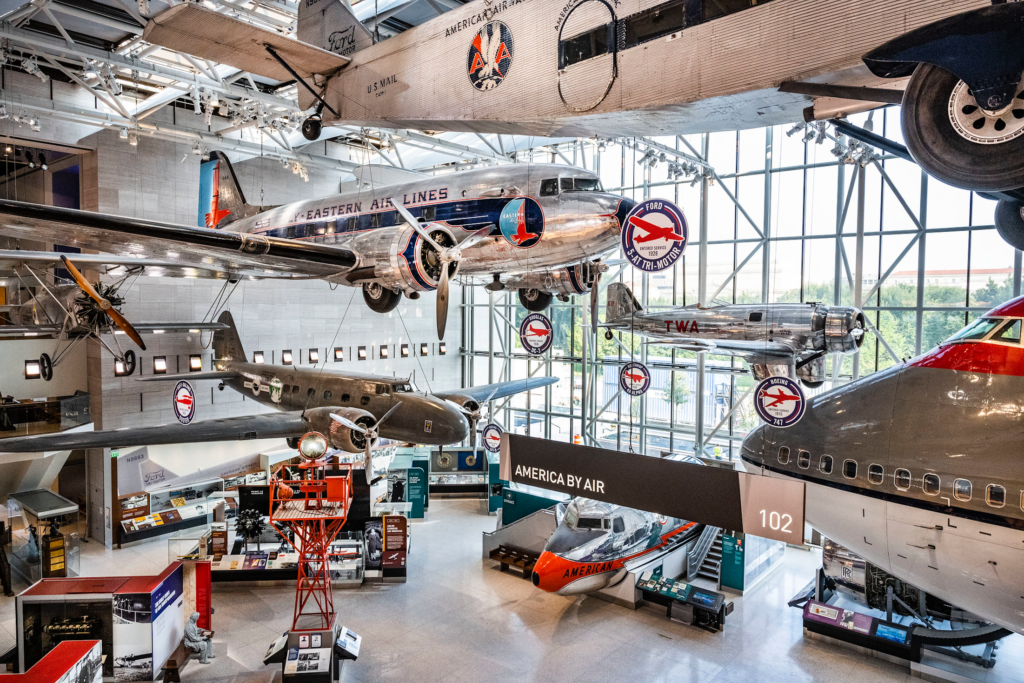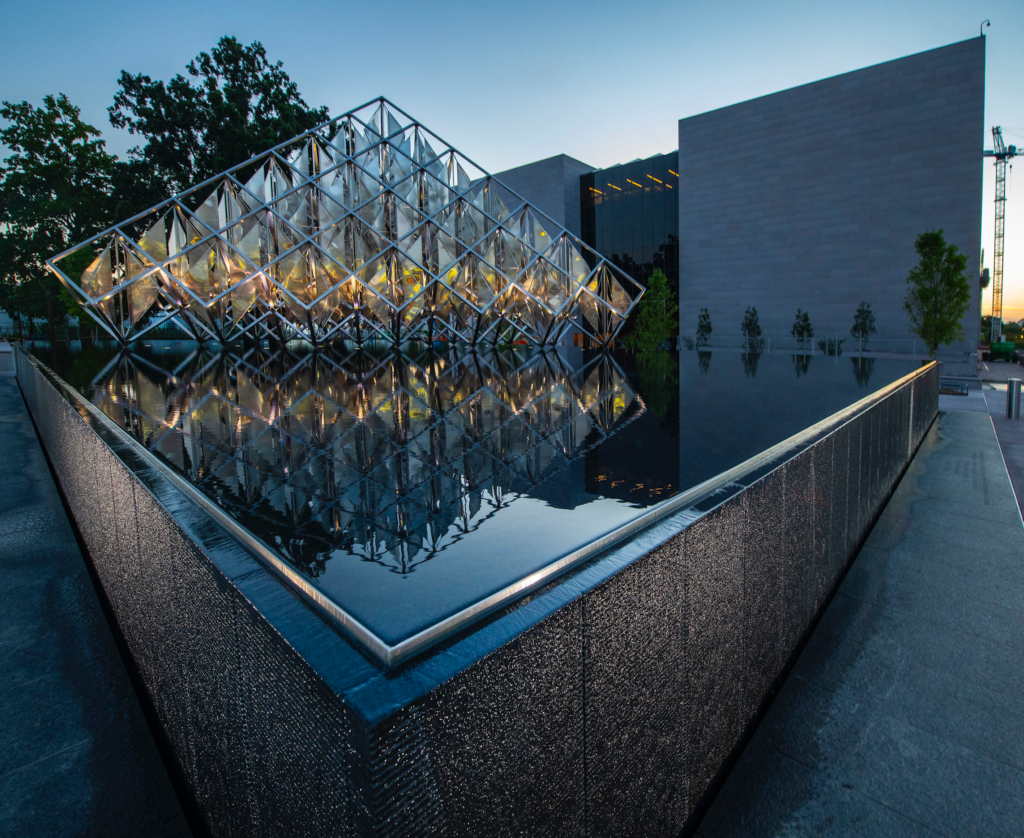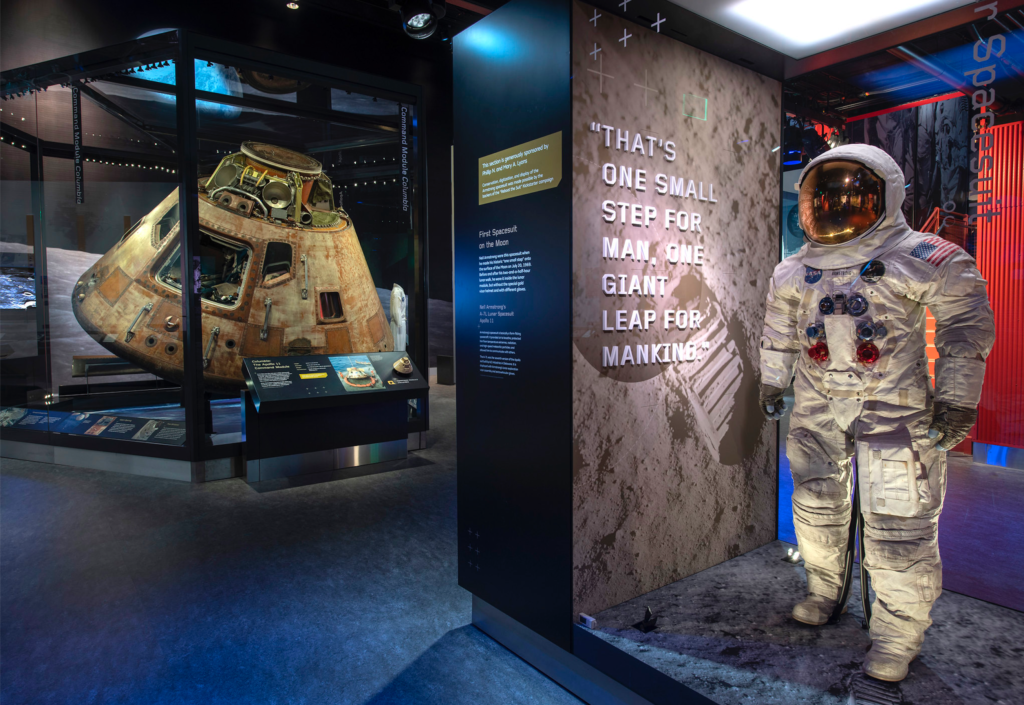
With new galleries and historic aircraft galore, Smithsonian’s expanded National Air and Space Museum reaches new heights on the National Mall.
Written by Jenn Thornton
With the first part of a soaring expansion—a monumental, multiyear overhaul that began in 2018—complete, Smithsonian’s National Air and Space Museum is once again flying high with eight new and renovated galleries along with a host of high-tech improvements. So much for waiting in the wings…
With renovations to the museum’s east wing still underway, the expansion cements the National Air and Space Museum’s reputation as the world’s top aviation attraction. In this country, where aviation fanatics have the pick of the litter, be it the Museum of Flight in Seattle, the National Museum of the US Air Force, or the National Air and Space Museum’s sister facility, the Stephen F. Udvar-Hazy Center in Virginia, that no. 1 ranking is, for many, not up for debate—even before the expansion. But now? Above and beyond, folks.
“Visitors will have a more modern and engaging experience, visiting favorite icons as well as many new artifacts never before seen at the museum in D.C.” notes Chris Browne, the John and Adrienne Mars director of the National Air and Space Museum. Among these priceless pieces of history are, for the first time since 2015, astronaut Alan Shepard’s Mercury spacesuit and the capsule he piloted, Mercury Freedom 7, which will reintroduce the jet set to the space age, along with the original 1903 Wright Flyer. Having been freshly displayed in new settings, these American icons and many others have shaken off the dust to be viewed, experienced, and understood anew via boldly reimagined environments, digital experiences, and dynamic display techniques.
Visitors will have a more modern and engaging experience, visiting favorite icons as well as many new artifacts never before seen at the museum in D.C.
Chris Browne
Given that since its opening in 1976, the National Air and Space Museum has welcomed roughly 350 million visitors, a refresh was certainly in order. That it happened at all, however, is a by-product of what started as a run-of-the-mill HVAC replacement project. As a methodical unearthing of the building’s systems revealed one thing after another in need of attention, the scope of the project ramped up dramatically, ultimately leading to an overhaul of the entire building.

Museum curators used the opportunity to re-envision how, once returned, its iconic artifacts would be showcased, and their stories highlighted. What emerged are the likes of the immersive “Walking on Other Worlds” experience in the “Exploring the Planets” gallery, which contains three generations of Mars rovers, and the interactive ‘One World Connected” display where space junkies can now experience the sensation of viewing Earth from the domed window of the International Space Station. In the “We All Fly” exhibition, meanwhile, visitors can marvel at the Cirrus SR22, Lear Jet 23 and more. According to Smithsonian Magazine, “Fully 55 percent of the 1,240 artifacts in the west end are new to the museum.” These include an exciting number of firsts: the WR-3 air race built by Neal Loving, the first African American certified to race airplanes; a T-38 piloted by the first woman to break the sound barrier, Jackie Cochran; and the Aviation Specialties Unlimited Challenger III, Sean Tucker’s custom-built aerobatic biplane. In an all-together different universe, fans of Star Wars: The Rise of Skywalker will find the full-sized X-Wing Starfighter featured in the film. Not in a galaxy far, far away, but a gallery. Together, these stars of air, space and screen are redefining Washington’s “west wing.”

Home page image: Douglas DC-3 and Northrop 4A Alpha. Courtesy of Smithsonian’s National Air and Space Museum/Jim Preston.


